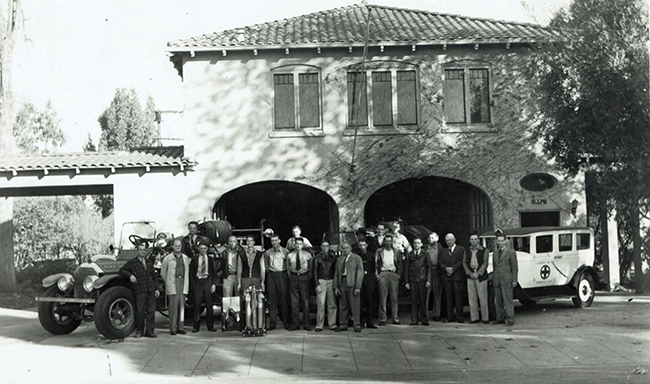City uses annual workshop to stay focused on goals
Claremont officials took a break from the frenzy of municipal duties on Saturday to refocus on city goals at the council’s annual priorities workshop.
Taking a timeout didn’t mean taking a step away from city business. The yearly meeting provides an opportunity for council members and residents alike to revisit the city’s hot button issues and come up with a list of high-ranking agenda items for the coming year.
“By setting these priorities, we are saying for the next several months these are the things that we want to spend most of our energy and focus on very intently,” said Mayor Opanyi Nasiali.
Council members reestablished their commitment to economic development and financial stability, two long-standing concerns the city has managed well in recent years. A fresh renovation at Peppertree Square and a resurgence of traffic at the Auto Center Drive shopping center are among the accomplishments city officials have achieved in economic development over the past year. Staff continues to work with developers to identify an anchor store for Peppertree, with eyes set on further development at sites such as the Pit, located at Monte Vista Avenue and Foothill Boulevard.
The city enjoys a $1.3 million surplus in the 2012-2013 fiscal period after several years of financial uncertainties. Claremont administrators continue to monitor the city’s income, as ad hoc committees’ evaluate big-budget wish list items like a new police facility and upgraded senior center.
Local water issues also remain at the forefront of city priorities, added to the list by recommendation of Councilmember Sam Pedroza last year. The topic of Claremont’s water system is arguably among the most discussed in town, with councilmembers committed to a fight with Golden State Water Company for ownership of the city’s water system. After submitting two offers to the water company last year, both of which were turned down, city staff proceed forward in preparing documents necessary to continue toward water system acquisition. The city intends to hold a public discussion on a potential water system operator, as well as a special election on the acquisition in the coming year, according to the action plan.
The potential water system acquisition isn’t the only reason city officials have prioritized local water matters in 2014. City administrators are gearing up to manage the costs of a pricey new state mandate, the Municipal Separate Storm Sewer System Permit (MS4). The permit further regulates the treatment of storm water runoff that recedes into the waters of the San Gabriel Valley Watershed, providing for water conservation among many other benefits. To date the city has no funding source for the MS4 regulations, which have been estimated to cost the city nearly $400,000.
While there’s nothing rosy about the MS4 for Claremont or other statewide municipalities, it’s not all thorns either. Mayor Pro Tem Joe Lyons insisted there are benefits to this unfunded mandate.
“Ultimately we can turn it to our advantage,” he suggested, like using the treated water for replenishing the city’s supplies or for other creative reuse.
Council members hope to explore these benefits through an increased role in sustainability efforts, adopted as a top council priority at the workshop. In addition to continuing to incorporate the goals of the city’s Sustainability Plan into daily operations, council members hope the city will explore the possibility of allowing residents the opportunity to install greywater systems, which capture water from baths, non-kitchen sinks and washing machines for reuse in irrigation. The city will also be working with Sustainable Claremont to enact the Drought Resistant Irrigation Program, or “DRIP,” a water-wise landscape educational series for residents and businesses. The goal is to make the DRIP program as successful and widespread as the nonprofit’s Community Home Retrofit Program (CHERP), which currently boasts 219 completed home retrofits.
Among the many city projects that fall under the sustainability umbrella, the maintenance of Claremont’s urban forest emerged as a major priority to councilmembers and Claremonters alike. Several residents came forward urging the council to rededicate itself to the city’s decaying canopy. The recently declared drought and controversy over poor pruning jobs on private property were among the concerns.
“Our trees could be compromised,” said Claremont resident Mark von Wodtke, a landscape architect and member of Sustainable Claremont’s Tree Action Group.
“It’s much less expensive to take some proactive action than to replace trees,” he added, suggesting the officials consider reinstating the city water truck or purchasing a water tank for watering needs.
Councilmembers heeded the residents’ request to more closely monitor the city’s treescape. “It is our city logo, I’d suggest trees are at the top of the list,” Councilmember Sam Pedroza said.
Public safety, with the recent increase in commercial and residential burglaries, and quality of life issues—looking at bike and pedestrian safety, the Claremont Hills Wilderness Park, homeless solutions and examining pocket neighborhoods as a part of the city’s affordable housing strategy—were also among other new high-ranking areas of business for the city in 2014.
—Beth Hartnett
news@claremont-courier.com










0 Comments